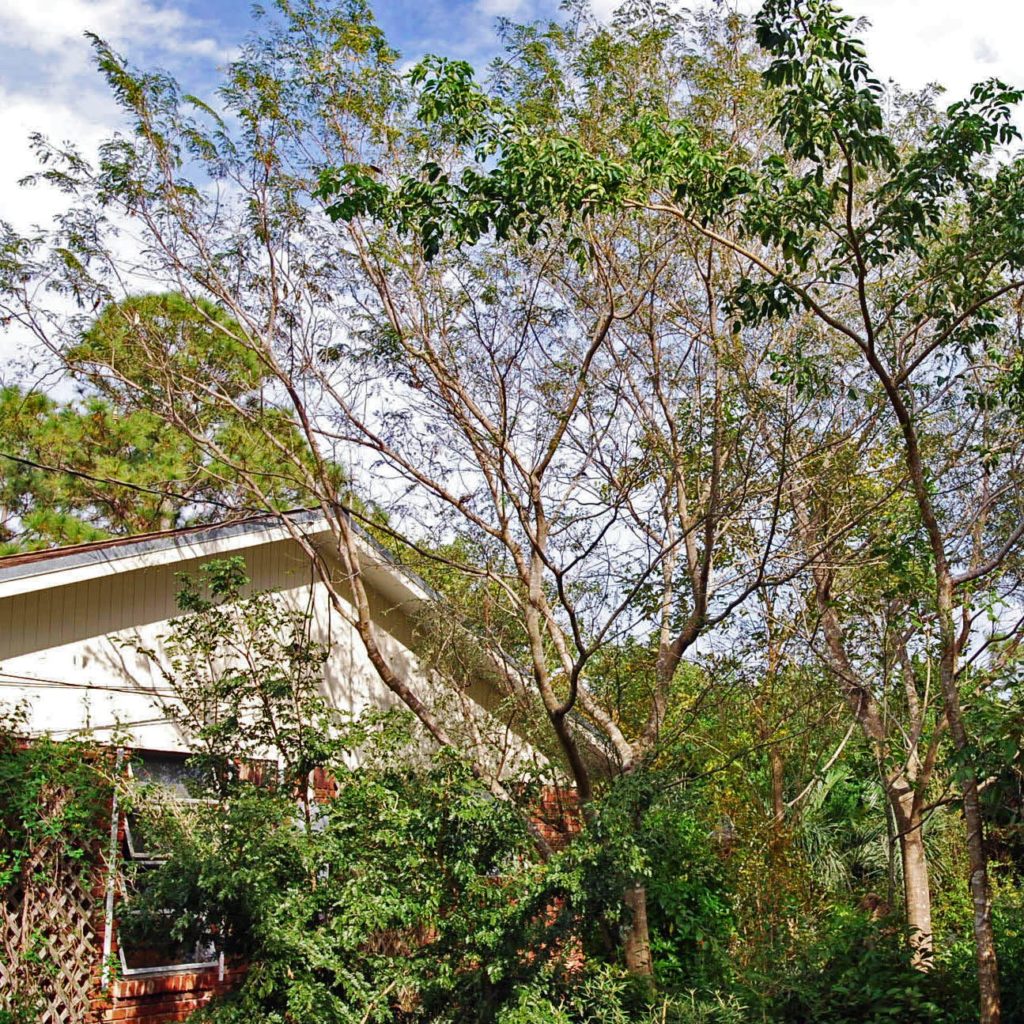
Wild Tamarind
Lysiloma latisiliquum
Wild Tamarind is native to hammocks within Everglades National Park and portions of the Upper Keys. This large, fast growing tree will reach 50 feet or more in height. It will do well through Palm Beach County and survive freezing temperatures for short periods.
This is a great spreading accent tree with tiny leaflets that fall briefly in late winter. This allows sunlight to briefly warm your home. It has many one inch round white flowers that attract butterflies and bees. The seed pods are thin and dry and do not make a mess.
Gradually prune the branches of a young tree so that they are several feet apart, evenly spaced and have a wide angle to the trunk. Sharp angled branches tend to break off.
The soil should be deep and dry and not too fertile or else the tree will grow too fast and tend to break in only moderate winds. A tree that starts breaking early in moderate winds should be moved or removed if the leader is lost.
Plant on the south side or the northwest corner of the house for summer shade. Wild tamarind allows just enough light thru to support shade tolerant shrubs underneath.
Wild Tamarind can be under planted with Wild Coffee, Firebush, Coontie, Marlberry, Wild Plumbago, White Stopper and other native shrubs. When Wild Tamarind is planted near a window and under planted with these shrubs, birds will have enough protection to visit a feeder and bird bath.
From your window you can easily watch painted buntings, goldfinches and indigo buntings in a feeder. Warblers, vireos and many other birds will eat insects that they find on the bark. Painted buntings love the young seeds of red salvia which is shade tolerant.
The foliage is the larval food for the cassius blue, large orange sulphur and the mimosa yellow butterflies. Female large orange sulphur butterflies are often seen hovering around this tree as they look for new leaves to lay their eggs on.
Look carefully when hiking in the upper Keys and you will notice groups of Wild tamarind only a few feet from each other. The result is a grove of straight white trunks creating a magical setting. Gumbo Limbo, Willow Bustic, Poisonwood, Soldierwood and Pigeon Plum crowded into this setting will add to the effect that trees with unusual bark create.